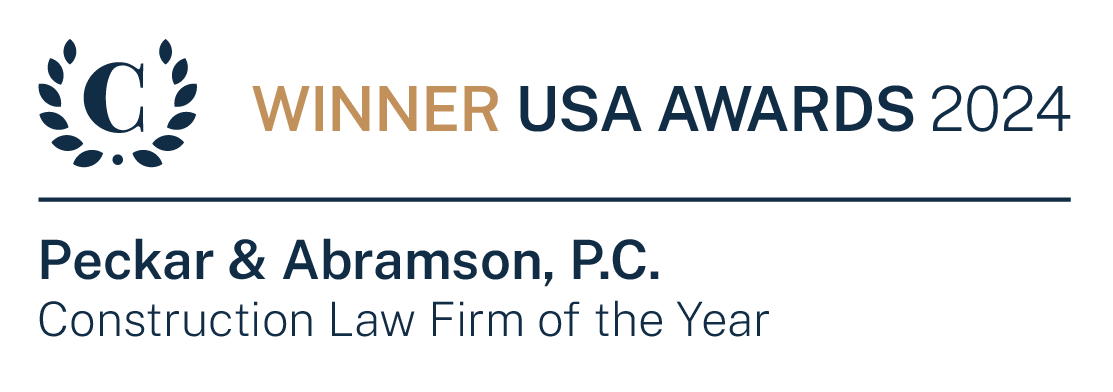Client Alerts & Publications
Bright-Line Changes: Prompt Payment Act Trends
Published Date: July 16, 2024
This article was written for the ConsensusDocs newsletter and first appeared here.
Untimely payment by the owner for contract work and additional work on construction projects can place an unfair financial burden on contractors and subcontractors. Most states have attempted to eliminate or mitigate this inequity in construction contracting through Prompt Payment Acts that govern payment deadlines and provide remedies for untimely payment. This article addresses the legislative trends aimed at minimizing the risk of non-payment, overdue payment, and withholding retainage in favor of downstream parties to a construction contract.
Fortifying Contractor Protections with “Bright-Line” Language
Over the last decade, states have been tightening prompt payment laws by replacing broad, general statutory language with bright-line rules. What is a bright-line rule? A specific or definite figure, a quantifiable marker—i.e., something owners, contractors, subcontractors, and suppliers should be aware of. Practically speaking, the more bright-line a prompt payment statute is, the greater the likelihood it will affect a construction project in your state.
A standard form construction contract, if not reviewed carefully, can create conflicts or confusion if it gives a party more leeway on payment deadlines than the applicable Prompt Payment Act. For example, consider an owner-issued Construction Change Directive (“CCD”) that requires a contractor to commence additional work immediately while a formal change order is negotiated. Consequently, a CCD can push financial burdens downstream, whether inadvertently or not, and may conflict with statutory payment deadlines. Nevertheless, an owner can be justified in its utilization of a CCD to maintain the project schedule. How should the parties competing interests be resolved?
First, using the freedom of contract, the parties can negotiate and create terms that appropriately address their dueling desires. Alternatively, legislators can attempt to quell the payment versus progress concerns of the parties to a construction contract in a fair manner. States across the country recently have made changes to their respective Prompt Payment Acts by clarifying and fortifying the mechanisms for timely payment. With the implementation of more bright-line statutory language, there is a trend towards preventing owners from saddling contractors and subcontractors with the financial burden of delayed payment for work performed.
A Brief Look at the Trends: Multi-State Survey
Take New York’s “5% retainage law” for example. For contracts entered into on or after November 17, 2023, owners seeking to withhold retainage are now capped at 5% of the contract sum.[1] Considering that the previous retainage standard was a “reasonable amount,” the new law is an example of a bright-line change. Next, the statute was amended to grant a contractor the right to submit a final invoice for payment in full upon “substantial completion” of the project. Again, this is a marked change from the previous law which provided that contractors could only submit a final invoice and seek retainage upon “final approval” for the work under a construction contract.
As evidenced by the New York amendments, the prior retainage statute left much to the parties’ goodwill, negotiation and working relationships. The previous standards granted leeway for a savvy party to contract for provisions that unfairly favored the party with the greater leverage, typically the owner. In the face of a dispute, the “reasonable” standard left room for arguments to be made and evidence to be submitted to prove a party’s position. Now, the statute continues to favor fair and timely payment, but with specificity.
Effective January 1, 2023, Virginia’s prompt payment laws saw changes that expanded the parties and types of contracts that it covers.[2] Virginia introduced specific procedures that owners and contractors must follow when withholding payments for contractual “noncompliance” on private projects. Namely, owners must send written notice within forty-five days, and contractors within fifty days, specifically identifying the amount being withheld and the alleged noncompliance. On public projects, contractors are required to pay lower-tier parties within sixty days of receiving an invoice, regardless of whether they have received payment from the state agency.
Like many states, Pennsylvania’s prompt payment laws allow contractors and subcontractors, who have not been timely paid, to recover penalties, interest, and attorneys’ fees. Effective October 10, 2018, however, Pennsylvania’s Contractor and Subcontractor Prompt Payment Act (“CASPA”) was amended to resolve longstanding debates about its protections.[3] The amendments provide that: (1) the statute’s protections cannot be waived, and (2) contractors and subcontractors are expressly authorized to suspend performance in the event of nonpayment, subject to the required notice.
For contracts entered into, amended, or renewed on or after July 1, 2020, Tennessee’s prompt payment laws provide a procedure for the right to stop work.[4] First, parties who have not timely received payment must send a notice to the nonpaying party. If the nonpaying party does not respond within ten days with adequate legal reasons for the nonpayment, the unpaid party may seek injunctive relief—among other things. The 2020 changes permit a party to stop work if it does not receive payment or adequate legal reasons for nonpayment and entitles the party to an extension of the contract schedule.
In a similar vein, Texas’ prompt payment laws were recently amended to add a bright-line update addressing the right of contractors or subcontractors to refuse to perform additional work ordered by the owner. Specifically the new law provides that contractors or subcontractors may elect not to proceed with additional work ordered by the owner if the value of the additional work plus the value of previously directed additional work for which there is no fully executed change order exceeds 10% of the contract value.[5] The statutes only apply to construction contracts entered into on or after September 1, 2023. Critically, a contractor or subcontractor who elects not to proceed with the additional work covered in the statutes is not responsible for damages associated with the election not to proceed. The protections are not waivable and any agreement to waive the right will be deemed void. These statutory changes are aimed at protecting contractors and subcontractors from undertaking significant scope changes without fair pay.
Considerations
The clear trend is for states to enact legislation to level the playing field so that contractors and subcontractors do not have to bear the financial burden of having to expend the money to perform the work and not be paid for it in a reasonable time. How these leverage-creating laws will fare in their application likely will be determined when they come under the judicial microscope in their respective jurisdictions. With the continuing trend toward bright-line rules, standard form construction contracts may require careful scrutiny by a construction attorney in your state to ensure the contracts are compatible with the statutory rules. One thing is for certain: the brighter the line, the more attention practitioners should pay to it.
For more information, please reach out to Stephanie L. Cooksey.
__________________________________________________________________________________________________
[1] See N.Y. Gen. Bus. Law § 756-c (McKinney).
[2] See Virginia Code § 2.2-4347 et seq.
[3] See Pa. Stat. Ann. tit. 73, § 501 et seq.
[4] See Tenn. Code Ann. § 66-34-101 et seq.
[5] See Tex. Gov’t Code § 2251 et seq. (public projects); Tex. Prop. Code § 28 et seq. (private projects).









